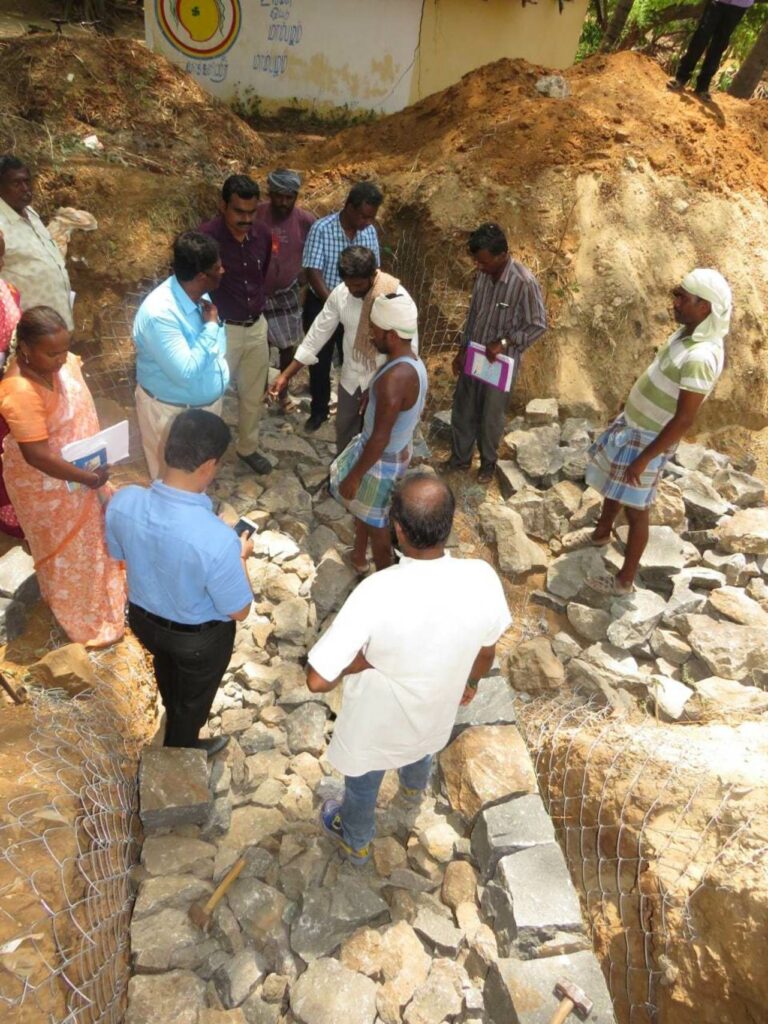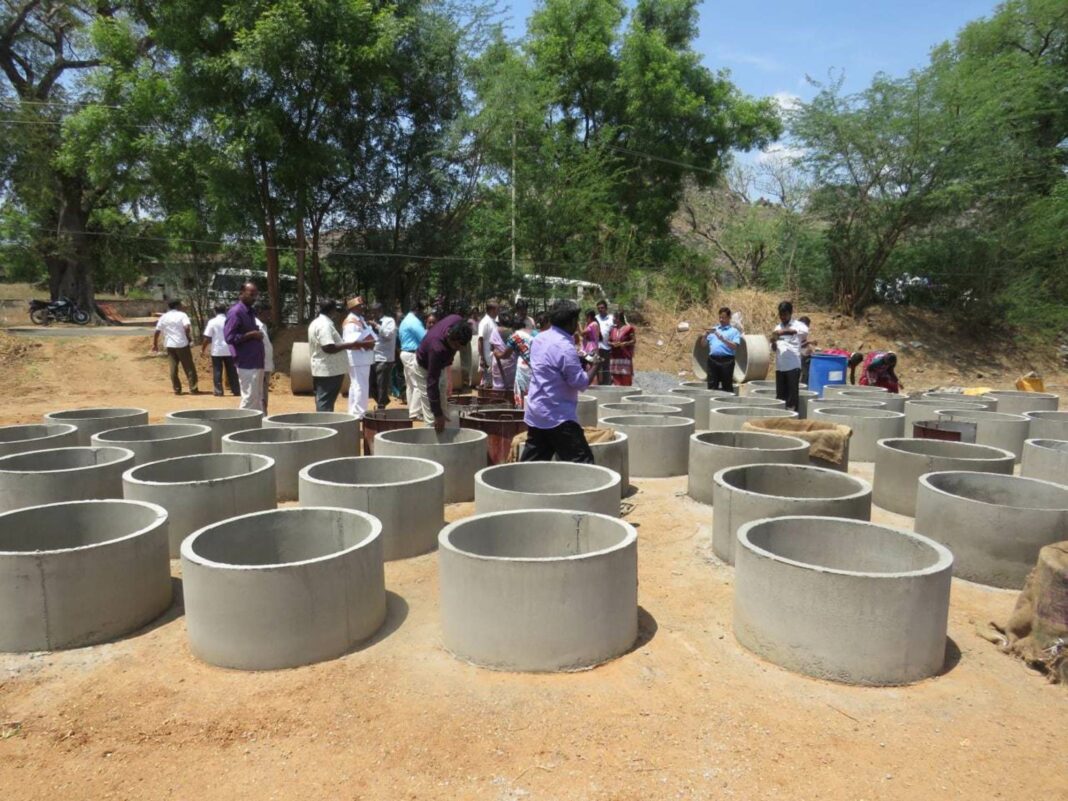Under the guidance of one man, India’s women are restoring their villages and protecting their children’s futures, one river at a time.
By 2014, the residents of the village of Samalanatham in the southern Indian state of Tamil Nadu had experienced a particularly long drought that drove many of the region’s men to nearby cities in search of work. The women, remaining in the village, struggled to raise children in an area where farming was barely viable.
The village’s primary water source — the Naganadi River — was so dry that residents, according to Chandrasekhar Kuppan, a volunteer with the Art of Living Foundation, were ‘‘using groundwater for drinking purposes by putting in borewells.’’ What remained for use in farming depended entirely on sporadic rainfall, leading to poor crop yields.
The conditions in Samalanatham were the same in farming communities throughout the Indian state of Tamil Nadu. In 2017, desperate farmers — wearing the skulls of fellow farmers who had taken their own lives — paraded through the streets of the federal capital of New Delhi, according to a news report, demanding that the federal government help them deal with the worst drought in 140 years. Even the state’s primary water reservoirs were at as little as thirteen percent of capacity.
India as a whole is increasingly vulnerable to the impacts of climate change. More than sixty percent of agricultural land in the country is not irrigated, and increasingly erratic monsoons have created massive droughts. Throughout India, farmers have deserted their ancestral villages, migrating to cities to find jobs.
But since 2014, Samalanatham — once emblematic of the country’s distress — has become a symbol of the solidarity and resilience of Indian farmers. Under the guidance of activist Kuppan, village residents — almost exclusively women — worked to revive the Naganadi by constructing boulder checks (dam-like structures made from loose boulders) to reduce erosion and water loss during rains and recharge wells to replenish groundwater. When upstream reserves of groundwater are abundant, Kuppan explains, water naturally flows into rivers further downstream.

After laboring on the project from late 2014 until 2017, their work paid off: the river again became a reliable water source for crops and livestock. Kuppan now calls the Naganadi a “perennial river” offering “a consistent flow … throughout the entire year.”
The Mahatma Gandhi National Rural Employment Guarantee Act (MGNREG), a public employment program, played a vital role in ensuring the success of the river rejuvenation initiative, Kuppan says. First passed in 2005, the Act finances a minimum of 100 days of work for inhabitants of India’s most disadvantaged rural areas. Kuppan used the MGNREG to pay the villagers of Samalanatham for their work constructing the boulder checks. They “exerted 100% effort and received full payment,’’ he says.
Farmers now harvest three times a year and have significantly increased their cultivation of such commercially valuable crops as vegetables, oil seeds, pulses (legume seeds), and cereals.
And by ‘‘ensuring water availability for agriculture,’’ Kuppan adds, the Art of Living Foundation has created a greater demand for labor by landowning farmers, which helps many avoid leaving their villages to find work, including lower-caste landless laborers. A reliable source of employment and income, Kuppan says, reduces their vulnerability to exploitative economic practices such as debt bondage.

Kuppan’s blueprint for river restoration — so successful with the Naganadi — is being replicated in other parts of Tamil Nadu. To date, Kuppan says, sixty-eight dead rivers have been restored, positively affecting the lives of 34.5 million people.
Women have been pivotal to this success. While expanding his river rejuvenation campaign across Tamil Nadu, Kuppan trained more than 45,000 laborers — ninety-five percent of them women. Women, he says, understand the importance of preserving the natural environment for their children.
Kuppan says that the federal government remains committed to funding his river rejuvenation campaign, despite reports that the incumbent administration of Prime Minister Narendra Modi has significantly reduced its budget for the MGNREG employment scheme.
Kuppan credits his spiritual mentor Gurudev Sri Ravi Shankar, the founder of the Art of Living Foundation, for inspiring his quest to save the country’s rivers. He first joined the Foundation in search of solace after struggling with various health and emotional issues. He met Gurudev Sri Ravi Shankar in 2005 and quickly developed a bond with him.
When Kuppan later visited his ancestral village and saw how local farmers were struggling with a lack of water, he went to Gurudev Sri Ravi Shankar for guidance. ‘‘Gurudev Sri Sri Ravi Shankar ji emphasizes personal growth that eventually ripples into the community and environmental betterment,’’ Kuppan explains. His mentor offered him the Foundation’s resources to tackle the village’s water crisis, prompting the start of what would become a successful campaign to restore Tamil Nadu’s rivers and provide reliable sources of drinking and irrigation water to millions of farmers and citizens.


Thank you
Very good initiation